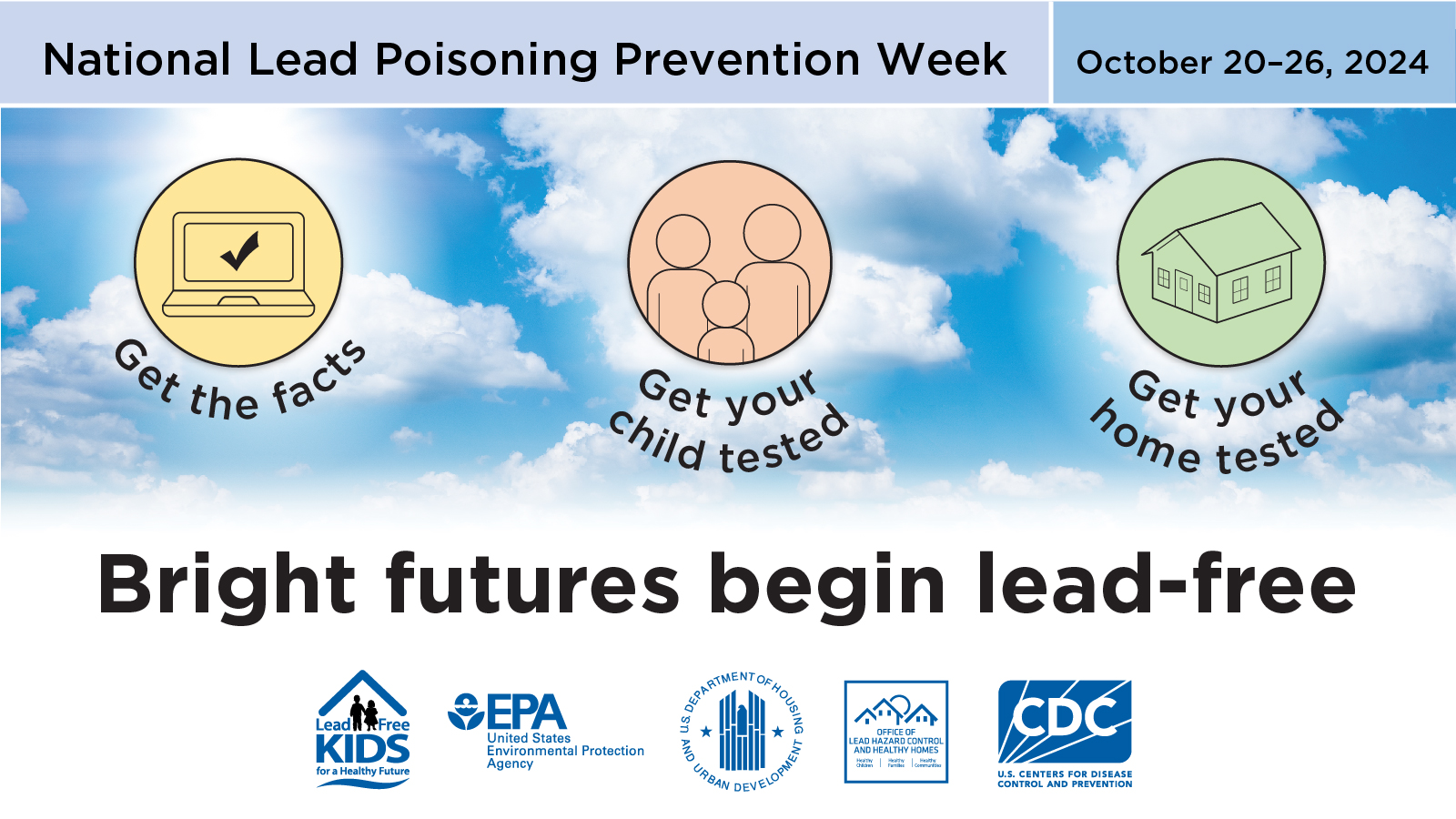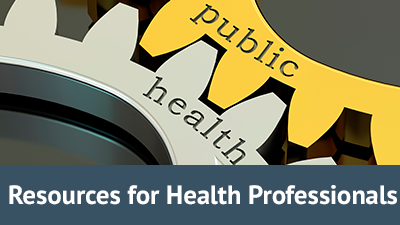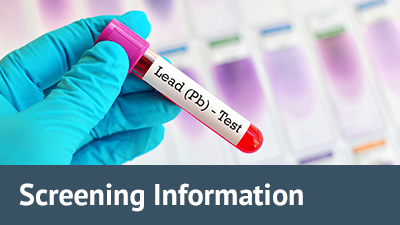Blood Lead Surveillance Branch
National Lead Poisoning Prevention Week 2024
This year National Lead Poisoning Prevention Week (NLPPW) is October 20-26. The goal for NLPPW each year is to bring together community stakeholders with the aim to reduce childhood exposure by increasing prevention efforts and bringing awareness to lead poisoning. Each year the Environmental Protection Agency, the Centers for Disease Control and Prevention, and the U.S. Department of Housing and Urban Development team up to create materials and an information kit that can help promote this initiative. The information kit can be used and customized to meet the needs of different communities.
The theme for 2024 is “bright futures begin lead-free,” because we all want bright futures for our children and communities. One of the key takeaways during NLPPW is to get your child tested. A blood test is the best way to find out if your child has lead poisoning. Children who are enrolled in Texas Health Steps/Medicaid are required to be tested for lead at the ages of 12 and 24 months of age, up to the age of 6 if there is no previous test on file. If your child is not enrolled in Texas Health Steps and you are unsure if your child needs to be tested for lead there are two simple ways to gauge if a lead test is needed. You can complete a simple Lead Risk Questionnaire to determine if there has been a potential exposure, or you can follow the Blood Lead Screening Guidelines form and see if you live in a targeted zip code. If you have any concerns about lead poisoning, ask your childcare provider about getting a blood lead test.

Health Advisory
The Texas Department of State Health Services has issued a health advisory connected to several brands of cinnamon applesauce and cinnamon apple puree sold in pouches that may have extremely high concentrations of lead. Children in multiple states have been reported with elevated levels of blood lead after consuming these products, including children from Texas.
View the DSHS Health Advisory for more information.
Updated Blood Lead Reference Value (BLRV)
As of January 1, 2023, the Texas Department of State Health Services (DSHS) has implemented a blood lead reference value (BLRV) of 3.5 micrograms per deciliter (µg/dL), as recommended by the Centers for Disease Control and Prevention (CDC). DSHS uses a BLRV of 3.5 µg/dL to identify children with blood lead levels that are higher than most children's levels. The Reference for Blood Lead Retesting and Medical Case Management, Pb-109 form provides guidance for blood lead levels ≥3.5 µg/dL and has been updated to reflect CDC guidance.
View the HEALTH ADVISORY: DSHS adopts new blood lead reference value of 3.5 ug/dL | Texas DSHS for further information.
The Blood Lead Surveillance Branch is made up of two programs:
- The Texas Childhood Lead Poisoning Prevention Program
- The Adult Blood Lead Epidemiology and Surveillance Program
The Texas Childhood Lead Poisoning Prevention Program (TXCLPPP) maintains a surveillance system of blood lead results on children younger than 15 years of age. Texas law requires reporting of blood lead tests, elevated and non-elevated, for children younger than 15 years of age. Physicians, laboratories, hospitals, clinics, and other healthcare facilities must report all blood lead tests to the Texas Child Lead Registry.
The Adult Blood Lead Epidemiology and Surveillance Program (ABLES) maintains a surveillance system of blood lead test results on individuals 15 years of age and older. Laboratories and physicians are required by the Texas Reportable Occupational Conditions Act to report all blood lead levels.
|
General Lead Exposure Information
|
|
|
|
|
|
Last updated October 21, 2024


